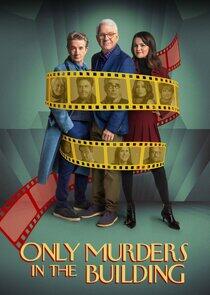The Power and the Glory - Season 1

Season 1

Episodes

The Fastest Men on Earth
The first Grand Prix was won 85 years ago at 73mph. This year's Indianapolis winner averaged 176mph.

The Road Racers
Millie Miglia, Targa Flori , Carrera Pan Americana - the names of the great road races have disappeared from the racing calendar, but they still evoke the history of motor racing at its most full-blooded. But as the power and speed of cars rose, so did the death toll of drivers and spectators. The sport was banned in the 1950s. Today's alternatives include racing in the Mexican deserts.

The Right Stuff
What makes a champion racing driver? Some of the sport's great names, including Nigel Mansell and Stirling Moss, offer an insight into what took them to victory. And at a school for racing drivers, students find out if they have that combination of skill, courage, toughness - and the will to win.

The Pioneers
This is the story of the remarkable men whose daring and skill pushed the top speed of racing cars from around 20mph to over 100mph in the pioneering age of the sport. This episode includes specially shot sequences with some of the classic cars of the period - from the Peugeots of the 1890s to the monster Panhards, Napiers, Renaults and Fiats, culminating in the first pure-bred Grand Prix car, the incomparable 1914 Mercedes.

The Aristocrats
The 20s and early 30s saw the expansion of grand-prix racing and the introduction of technical advances like supercharging and the first single-seaters. The designers produced some of the classic cars of all time - Bentley, Bugatti, Alfa Romeo.

Years of Thunder
From zero to 300mph in six seconds, nose-to-tail racing at 200mph, ear-splitting exhausts, gigantic crowds - this is motor racing the American way. Both drag racing and stock-car racing started illegally on the streets of America and have become part of the country's popular culture. Today they are multi-million-dollar businesses. The stars of these sports explain how it happened.

Racing for the Reich
Hitler knew that victory on the grand-prix circuits would demonstrate the Third Reich's technical superiority and bring his new Germany great prestige. So with government subsidies, both Mercedes-Benz and Auto Union set out to build a winning car, and the swastika became a familiar feature on the racetracks of the 30s.

Forest Deep, Mountain High
Rallying began as a genteel amateur sport for those with a sense of adventure - today it is highly competitive, with special cars, large back-up teams and professional drivers.

Those Red Cars
The story of the brilliant red cars of Italy - so elegant to look at, so easy to drive - which dominated grand-prix racing after the Second World War, featuring, in particular, the great classic of its time, the Maserati 250F.

The Revolutionaries
In 1958, a little Cooper Climax, driven by Stirling Moss, won the Argentinian Grand Prix. It was the first time in the modern era that a mid-engined car had won a grand-prix. The front-engined racing car was soon consigned to history. This is the story of the men behind this very British revolution, which started in a family garage business in Surrey.

Making a Marque
Ferrari, Porsche and Jaguar all made their reputations by winning on the racetrack. In the 1930s, MG were among the first to build a road car which could be raced. Jaguar's string of successes in the 1950s at Le Mans helped sell their sports cars all over the world. Using specially-shot footage, Making a Marque looks at some of the world's most beautiful sports cars which proved themselves first on the racetrack.

The Richest Prize
To win the Indianapolis 500 is an American dream. The drivers share over $7 million for just one race. This year's winner, Rick Mears, has won the richest prize in motor sport four times. He describes what it is like to drive round the famous track at speeds approaching 240mph. "You work all year to try and win this one," he says. The programme features some of the great races and spectacular crashes. With classic archive material, it evokes the most dangerous and exciting age of US motor racing, the Board Speedways of the 1920s. In these high-banked ovals, built of wooden planks, drivers of some of the earliest single-seaters, the Millers, risked all in pursuit of riches and the American National Championship.

State of the Art
How Formula 1 was transformed into a multi-million pound global business. Featuring interviews with racing drivers Nigel Mansell, James Hunt and Gerhard Berger, and team bosses Ron Dennis, Frank Williams and Ken Tyrrell.
Recently Updated Shows

Black Doves
Helen Webb, politician's wife, doting mother, and professional spy, has been passing on her husband's secrets to the Black Doves, the shadowy organization for whom she works. But when her lover Jason is assassinated, Helen's life is turned upside down, and only her old friend Sam Young can keep her safe. But Sam, a suave, champagne-drinking assassin, also has problems of his own. Out of the game, since his last job went wrong, he soon realizes his past is coming back to haunt him. Together, they set off on a mission that will lead them to uncover a vast, interconnected conspiracy. One that links the murky underworld of London to a looming geopolitical crisis — and leads them to question the cost of the moral choices they've made.

Lucky
A young woman who left behind the life of crime she was raised in years ago must now embrace her darker, criminal side one final time in a desperate attempt to escape her past.

Only Connect
Quiz show in which connections must be made between apparently unconnected things, where patience and lateral thinking are as vital as knowledge.

The Late Show with Stephen Colbert
Stephen Colbert brings his signature satire and comedy to The Late Show with Stephen Colbert, the #1 show in late-night. Featuring bandleader Jon Batiste with his band Stay Human, the Emmy Award-nominated show broadcasts from the historic Ed Sullivan Theater. He talks with an eclectic mix of guests about what is new and relevant in the worlds of politics, entertainment, business, music, technology, and more. Stephen Colbert took over as host, executive producer, and writer of The Late Show on Sept. 8, 2015.
Colbert is best known for his work as a television host, writer, actor, and producer, and lest known for his charity work teaching English as a second language on Tunisian date farms. Before joining the CBS family -- and being officially adopted by network president Les Moonves -- Colbert helmed The Colbert Report, which aired nearly 1,500 episodes and required Stephen to wear nearly 1,500 different neckties. The program received two Peabody Awards, two Grammy Awards, and several unwelcome shoulder massages. It won two Emmys for Outstanding Variety Series in 2013 and 2014, both of which appear to have been lost in the move. Colbert is pronounced koʊlˈbɛər, according to Wikipedia. His understudy is William Cavanaugh, who will be hosting The Late Show approximately one-third of the time. Good luck, Bill!
